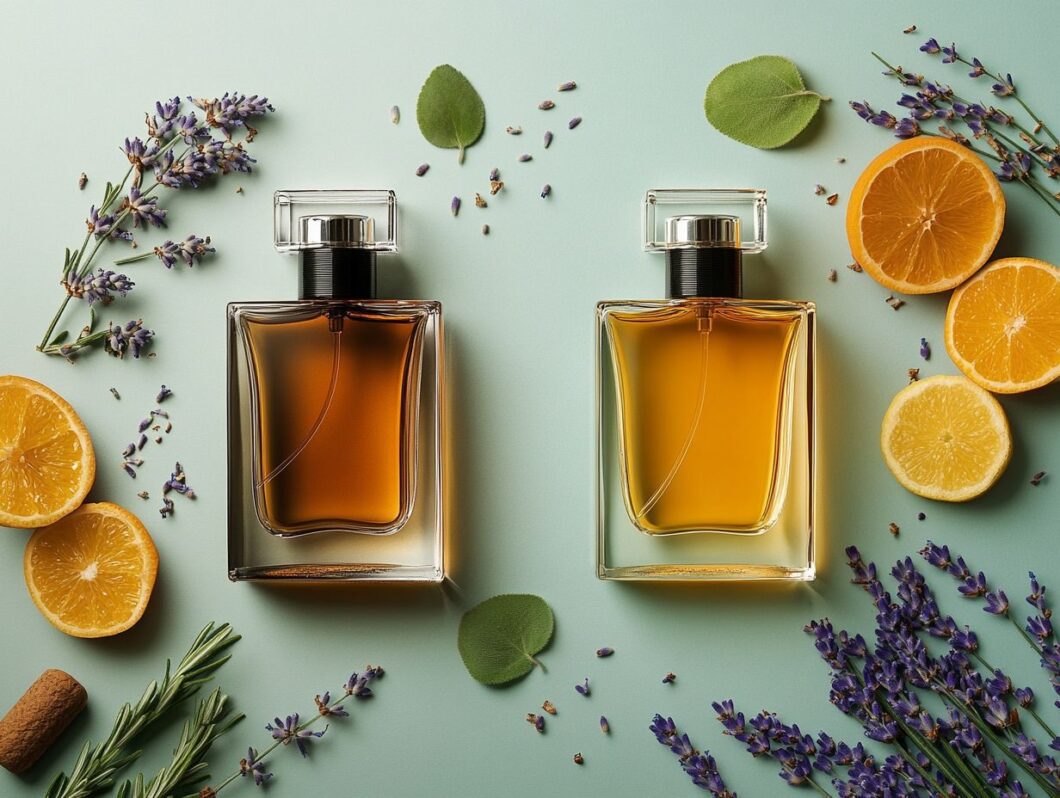Choosing the perfect fragrance can be both a delightful and challenging endeavor, particularly when considering the various strengths available.
This guide provides an overview of the essential aspects of fragrance strengths, with a focus on the widely recognized Eau de Parfum and Eau de Toilette. I will delve into their unique concentrations and longevity, equipping you with the knowledge needed to make informed decisions that align with your personal style.
Furthermore, I will share valuable tips to ensure your fragrance lasts throughout the day. Together, we will explore ways to enhance your fragrance experience and help you find the ideal scent for any occasion.
Key Takeaways:
The Basics of Fragrance Strengths
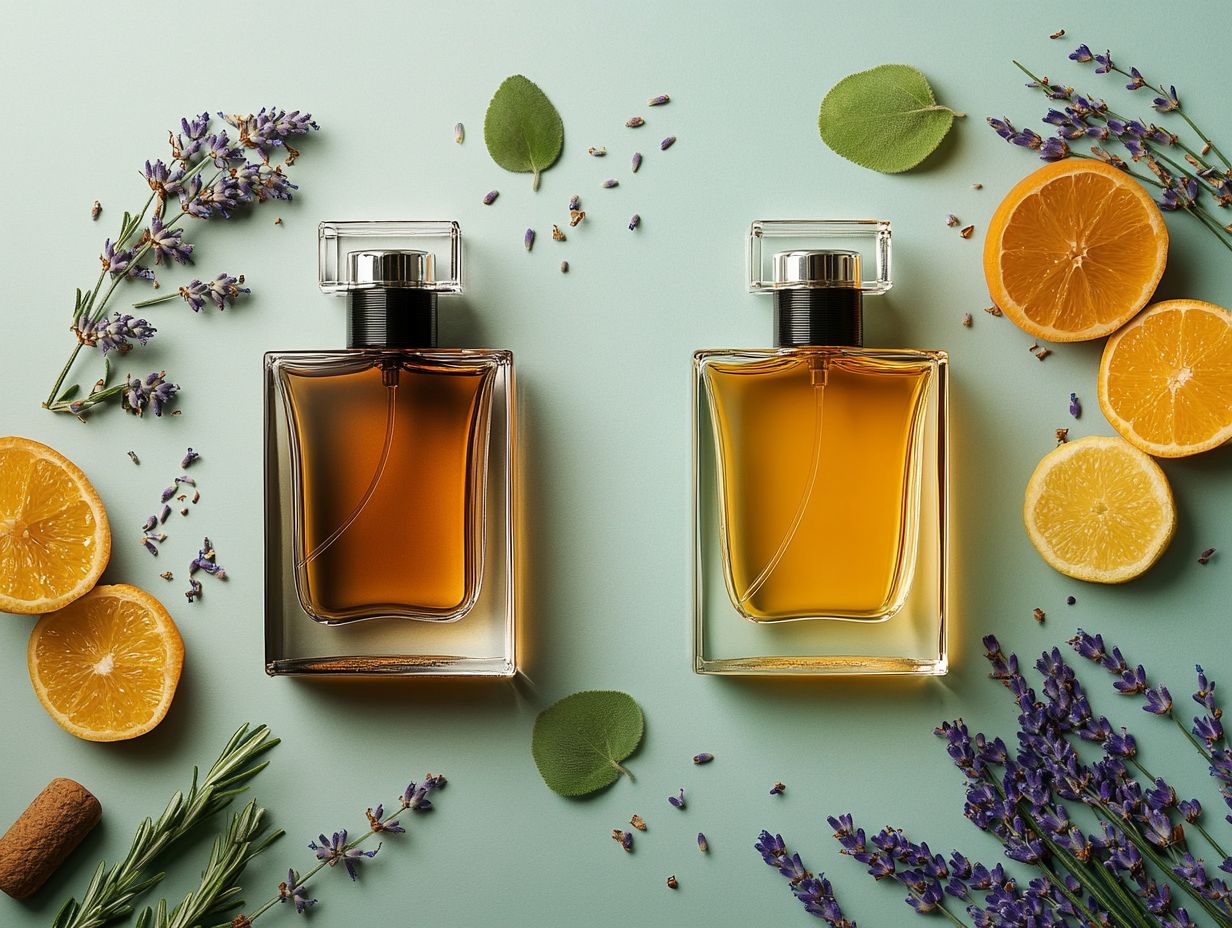
Understanding the fundamentals of fragrance strengths is crucial for anyone aiming to enrich their olfactory experience across various perfume types.
Fragrance strengths, which differ based on parfum concentration, affect the longevity of a scent on the skin and how it develops over time. There are several categories of fragrance strengths, including:
- eau de parfum
- eau de toilette
- cologne
Each providing distinct characteristics and scent profiles. By familiarizing myself with these differences, I can select the ideal scent for any occasion, personal preference, or mood, thereby ensuring a more gratifying fragrance experience.
Understanding the Different Types
Fragrance types can be categorized based on their specific concentrations and formulations, which significantly impact their character and longevity. For example, eau de parfum typically contains a higher fragrance concentration compared to eau de toilette, leading to a more intense and enduring scent experience.
Understanding these distinctions is essential for selecting a fragrance that aligns with personal preferences, whether one favors lighter citrus notes for daytime or deeper warm amber fragrances for evening wear.
Eau de parfum generally boasts a concentration of about 15% to 20%, allowing it to linger on the skin for several hours, making it an excellent choice for special occasions or nights out. In contrast, eau de toilette, with concentrations ranging from approximately 5% to 15%, is lighter and often more refreshing, making it suitable for casual wear or warmer months.
Popular fragrances like Jimmy Choo’s ‘Illicit’ exemplify the appeal of eau de parfum, while brands like Montblanc provide exquisite eau de toilette options that are ideal for daytime activities, ensuring there is a perfect scent for every moment.
Eau de Parfum: What You Need to Know
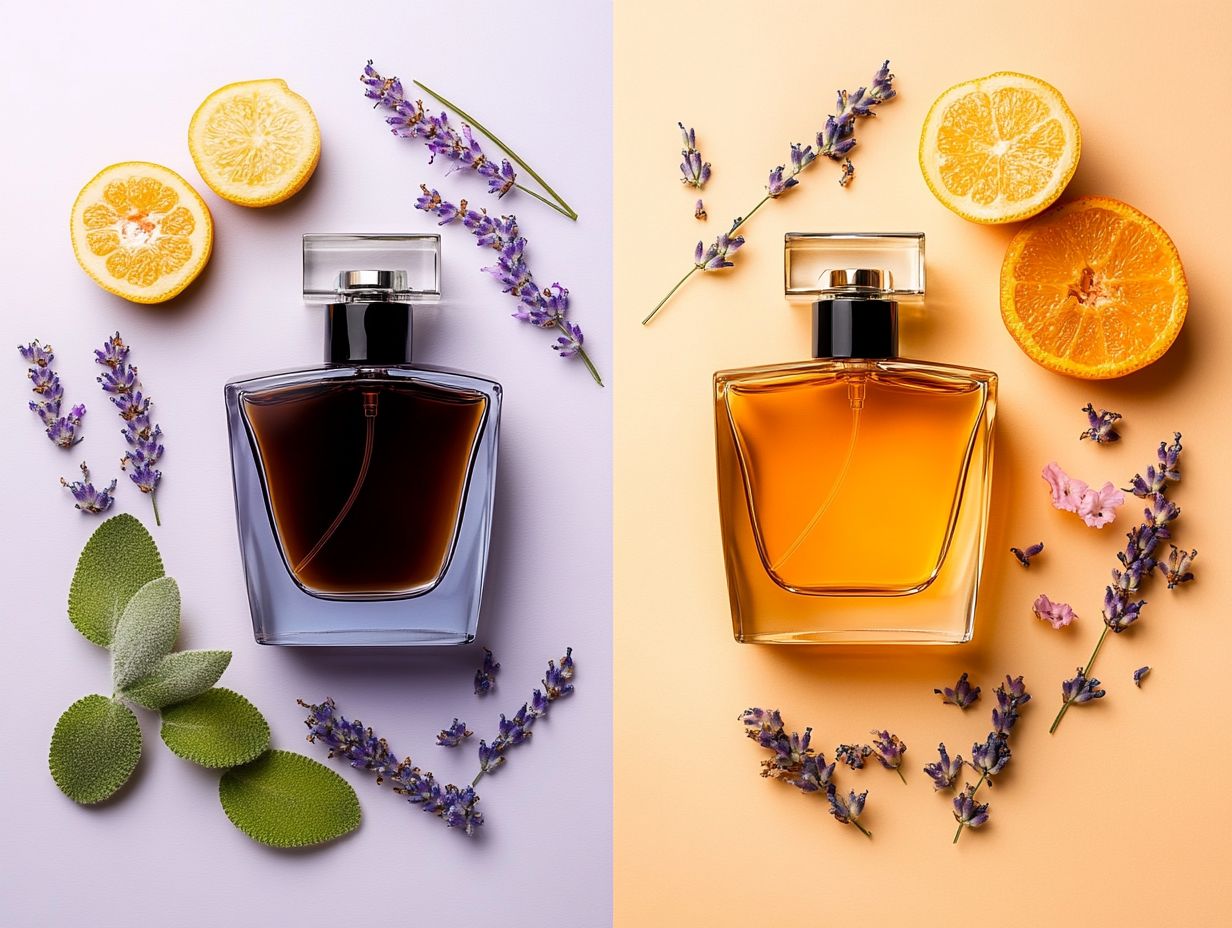
Eau de parfum is a fragrance choice that I often prefer, recognized for its higher parfum concentration, typically between 15-20%. This concentration significantly contributes to its enduring scent and rich aroma profile.
This type of fragrance presents a well-balanced blend of top notes, middle notes, and base notes, resulting in a multi-dimensional olfactory experience. With a strong emphasis on essential oils, eau de parfum tends to be more potent than eau de toilette, making it an ideal option for those seeking a long-lasting fragrance that aligns with their personal style and mood.
Concentration and Longevity
The concentration of fragrance oils in an eau de parfum plays a crucial role in its longevity and overall scent profile. With a higher concentration of perfume oils, an eau de parfum can last between 4 to 8 hours, depending on various factors such as skin type and environmental conditions.
By understanding the relationship between concentration and longevity, I can choose fragrances that align with my lifestyle and needs, ensuring that I enjoy my favorite scents throughout the day.
Additionally, individual skin chemistry is a significant factor, as the pH level and moisture of the skin can alter how a fragrance develops and lasts. For example, I’ve observed that those with drier skin may experience faster evaporation of the scent, while oily skin typically retains fragrances for a longer duration.
To enhance the longevity of my favorite perfume, I find that layering scents can be an effective strategy. Applying a matching body lotion or oil not only reinforces the fragrance but also provides a richer aromatic experience.
By considering various elements such as the fragrance oils used in the formulation and their unique properties, I can tailor my choices for a longer-lasting and more enjoyable scent journey.
Eau de Toilette: What You Need to Know
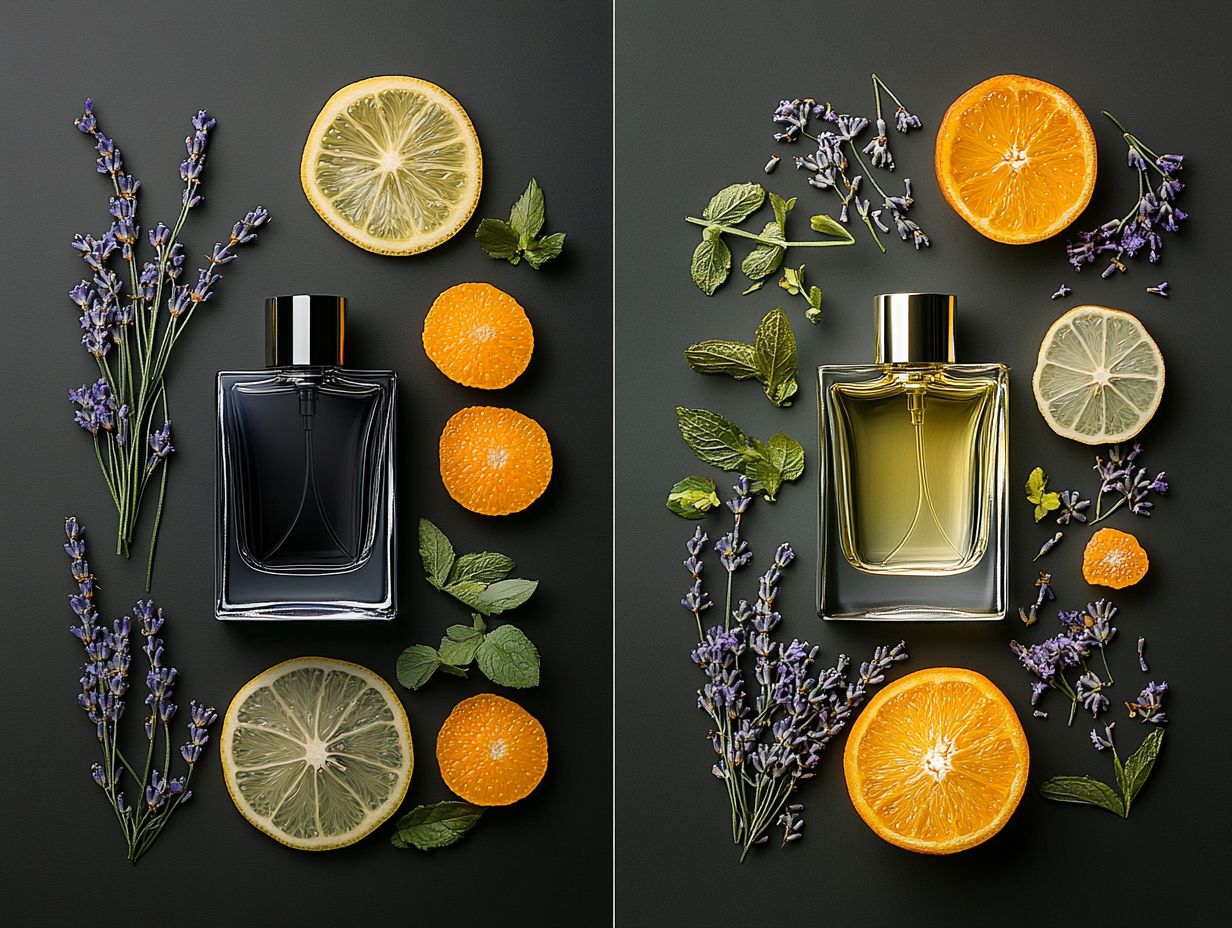
Eau de toilette is a popular fragrance choice that I appreciate for its lower concentration of perfume oils, typically ranging from 5-15%. This makes it lighter and often more refreshing than eau de parfum.
I find this fragrance type to be ideal for daily wear, as it provides a transient yet pleasant scent experience that can evoke various moods, depending on the selected fragrance notes. Often categorized within different fragrance families, eau de toilette serves as a versatile option for anyone looking to explore a range of scent profiles without overwhelming their senses.
Comparing to Eau de Parfum
When comparing eau de toilette to eau de parfum, I find it essential to consider the differences in fragrance concentration and their respective scent profiles. Eau de parfum typically offers a richer and more complex scent experience due to its higher concentration of perfume oils, which results in longer-lasting aromas. In contrast, eau de toilette features a lighter and more refreshing nature, making it an excellent choice for daytime wear or casual occasions where a more subtle scent is preferred.
Specifically, eau de parfum generally contains 15-20% fragrance concentration, compared to the 5-15% found in eau de toilette. This distinction not only impacts the intensity but also influences how these fragrances evolve over time. The deeper, often warmer notes of eau de parfum can evoke a sense of luxury and depth, making it ideal for evening events or special occasions when a captivating presence is desired.
Conversely, the crisp and airy qualities of eau de toilette make it perfect for everyday wear, enhancing one’s mood without overwhelming the senses. Understanding these nuances allows individuals to make informed choices that align with their personal style and the atmosphere they wish to create.
Choosing the Right Fragrance Strength for You
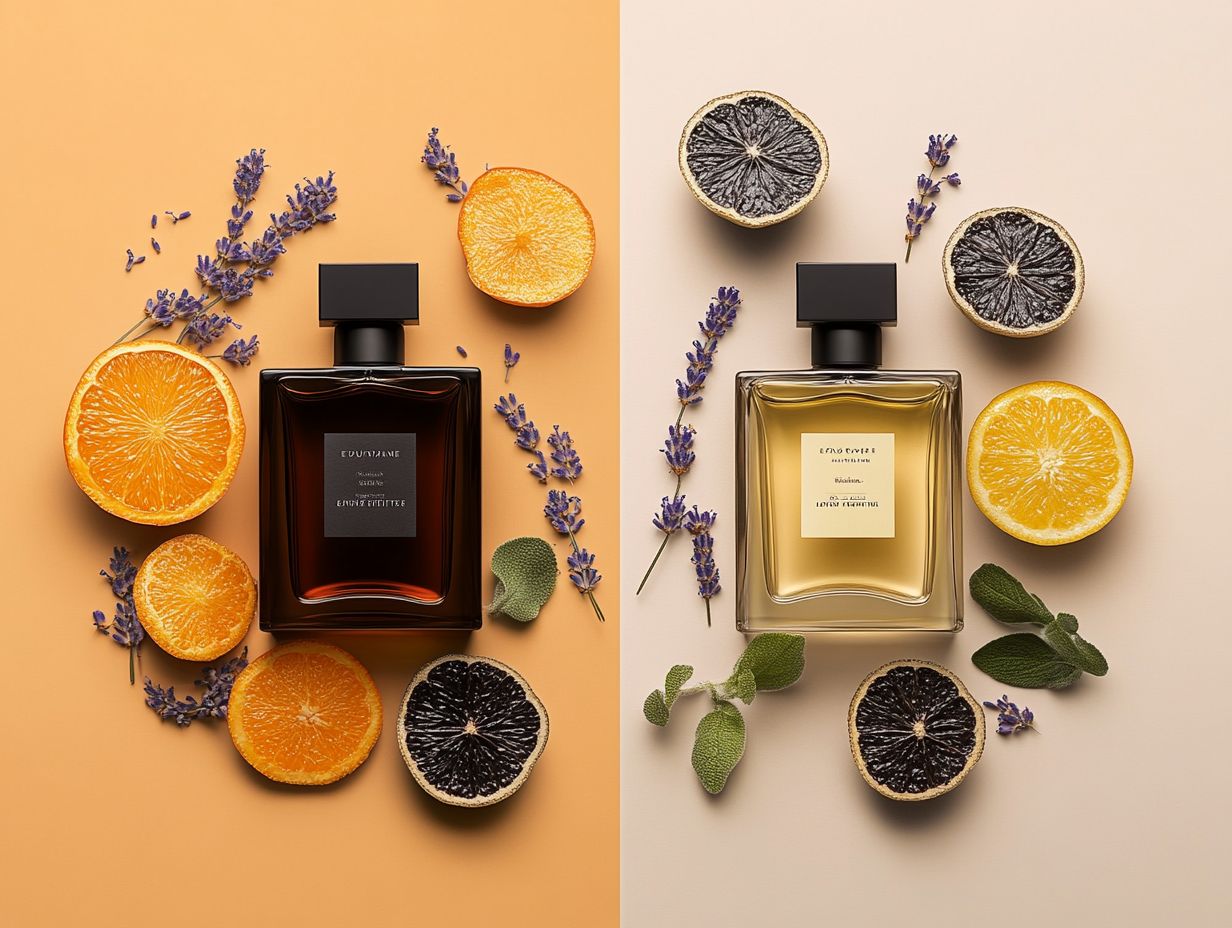
Selecting the appropriate fragrance strength is a crucial element in discovering a scent that aligns with my personal preferences, mood, and the specific occasion I am dressing for.
Different fragrance strengths, such as eau de parfum and eau de toilette, serve unique purposes and can evoke a range of feelings and emotions based on their composition and concentration.
By carefully assessing my lifestyle needs and preferences, I can effectively navigate the extensive variety of scent profiles and choose a fragrance that genuinely enhances my individuality.
Factors to Consider
When I select a fragrance strength, I take several factors into consideration, including my personal preference, the mood I wish to convey, and the specific occasion for which I am wearing the fragrance. Understanding my unique scent profile significantly enhances my fragrance experience and enables me to choose scents that align with my lifestyle.
I find that taking a scent quiz can also be a valuable tool to identify which fragrance types resonate with my character and preferences.
It is essential for me to consider the intensity of the fragrance and how it will interact with various environments. For example, I may opt for a lighter scent for a casual day out, while a more potent aroma may be more suitable for a formal event or an intimate gathering.
I also recognize that seasonal influences play a crucial role; warmer, spicier notes often feel appropriate in colder months, whereas fresh, citrusy scents typically suit the summer vibe. By reflecting on these variables, I can make informed decisions, ensuring that my fragrance not only expresses my personality but also complements the context in which it is worn.
Tips for Making Your Fragrance Last Longer
To ensure that my fragrance lasts longer throughout the day, I employ several effective tips and techniques that enhance the longevity of any scent.
I recognize that factors such as the application technique, the type of fragrance—whether it be perfume oils or eau de parfum—and the pH of my skin can significantly influence how a fragrance develops over time.
By utilizing fragrance layering and selecting the right areas for application, I can create a lasting scent that aligns with my personal style.
Maximizing the Scent’s Longevity
Maximizing the longevity of my fragrance requires strategic application and careful consideration of the scent notes in the perfume.
I find that applying fragrance to pulse points is essential; however, I also make it a point to moisturize my skin beforehand. Using a hydrating lotion helps to lock in the scent more effectively.
When selecting a fragrance, I prefer one with a well-balanced blend of top, middle, and base notes. This enhances the overall aroma and allows for a more complex and enjoyable scent journey.
When layering fragrances, I start with a lighter scent as the base and then introduce deeper, richer tones on top to achieve a harmonious balance. I enjoy experimenting with complementary fragrances, as this can lead to a signature scent that remains memorable and alluring throughout the day.


